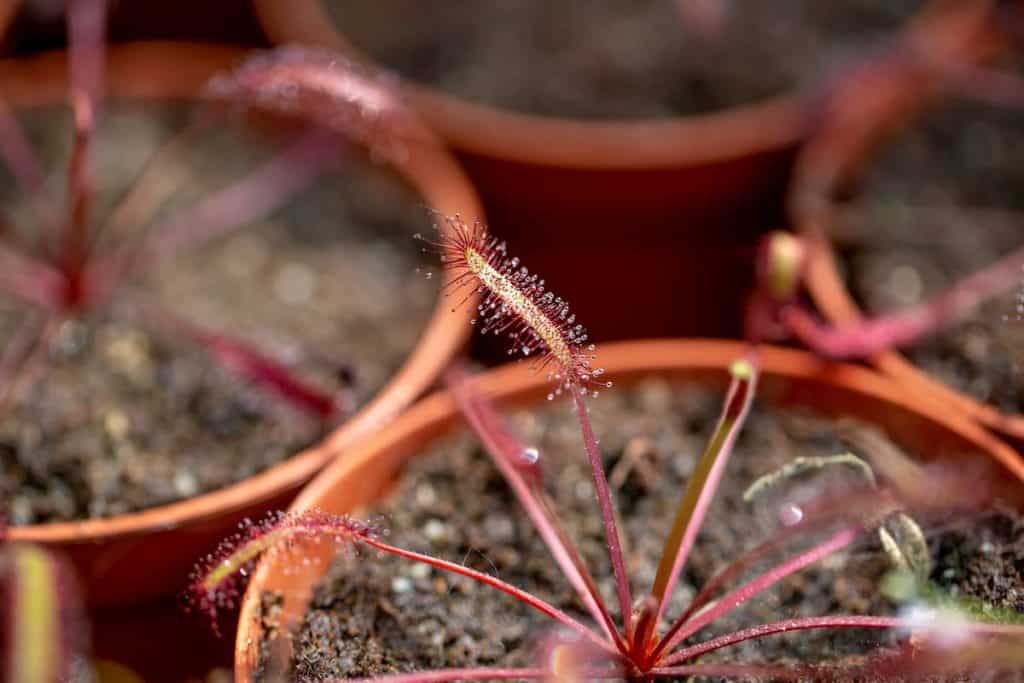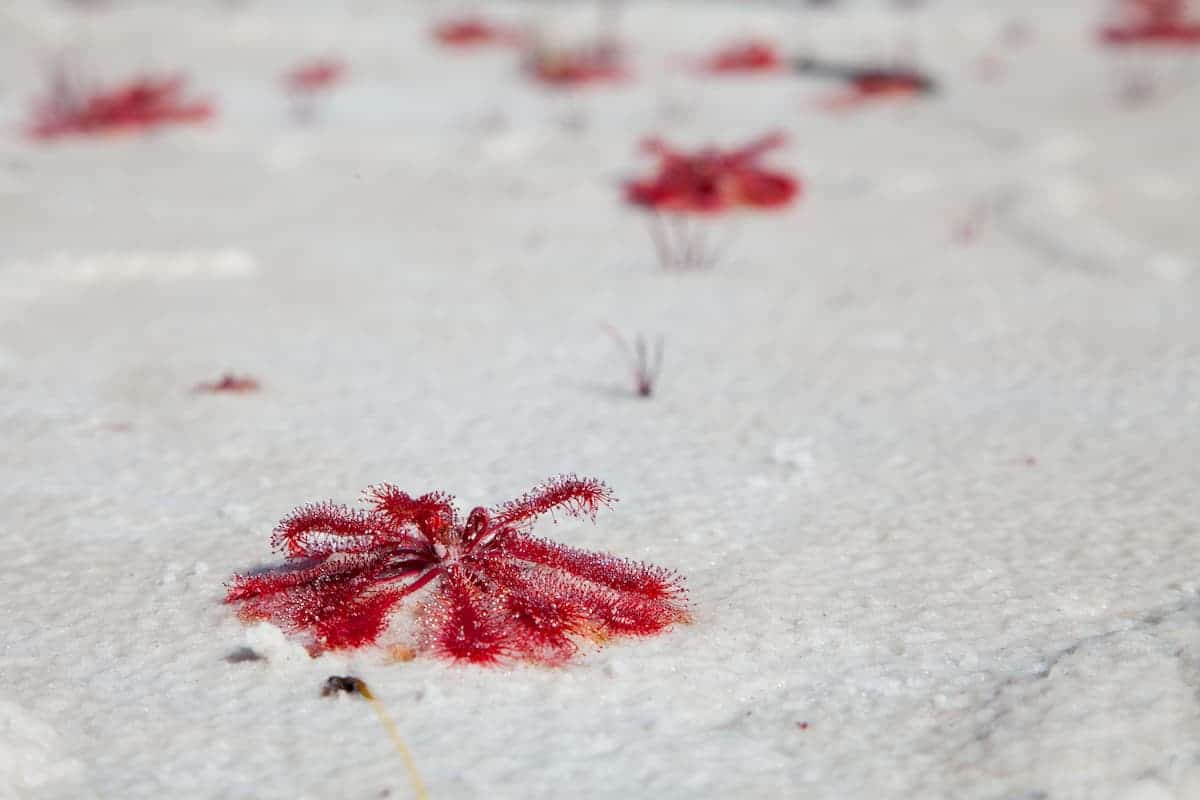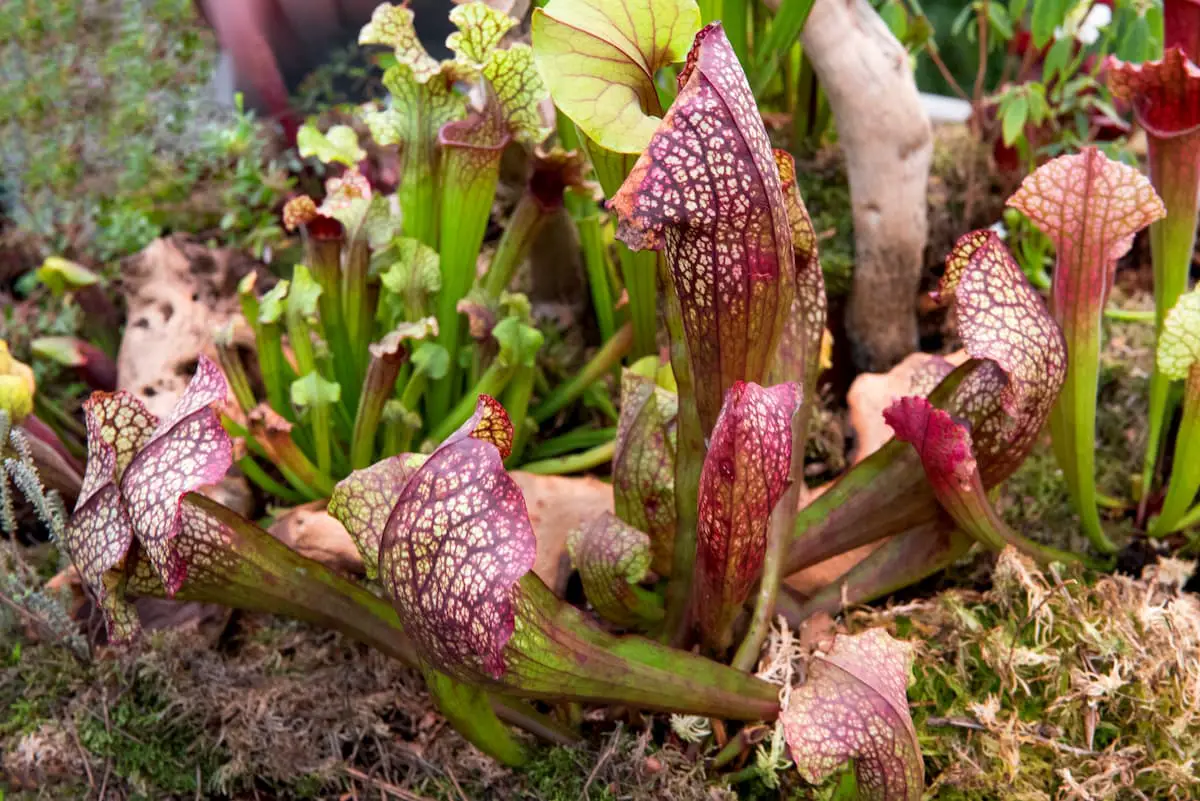Sundews are one of the most underrated carnivorous plants, able to grow in many more conditions and locations than other more sensitive plants.
When you start your carnivorous plant section in your greenhouse or garden you should include the sundew as a part of them, however, knowing just how to grow them can be a challenge.
You need peat sand, high humidity, warm summer, wet sand, sun, and outdoor or greenhouse exposure to grown sundews successfully almost anywhere in the world.
To grow the plant it needs to naturally attract its food and have the perfect exposure to sunlight, a safe place to be dormant during winter, and the right biome.
These things are difficult to maintain, with many people forgetting that while many carnivorous plants like the same environments there are still differences in how they need to be treated.
Exposure to fresh air, the speed of how they grow, and the locations where they usually grow are all things that must be considered when taking care of sundews.
Here’s everything you need to take care of Sundews in one easy to find the place!
Can you grow sundews indoors?
Unlike other carnivorous plants sundews can be grown inside with some TLC and care, they need more than just fresh air, being in spaces that are enclosed can cause the smell of the plant to be overwhelming.
The main way these plants attract bugs to be eaten is with a rather sweet but repulsive smell.
This means that you need to keep the plant somewhere it can easily attract bugs with their smell.
The plant uses its smell to attract the bugs but then uses the sticky substance on its offshoots to trap the bugs, which then eventually curls to eat the bug.
How big do sundews grow?
There are a lot of types of sundews, all growing in every imaginable location around the world and this means that some have access to large amounts of water and food. While others barely have access to the sun most of the year, this has greatly affected the size of the plant.
Sundews can be smaller than Venus Fly Traps, never needing pots much larger than simple garden pots. However, other sundews can grow to have branches longer than the average human arm and need to be replotted into ever-larger pots.
This is part of why you cannot keep a sundew indoors as they will either be too small to safely grow inside a building or so large that they simply cannot safely grow inside a building.
Where do sundews usually grow?
The most diverse carnivorous plant that unlike Venus Fly Traps or Pitcher Plants that grow in very specific areas these plants can grow almost anywhere. This means that you can have a long series of sundews growing on continents like Africa, Alaska, America, Asia, or Europe.
The only real challenge in growing sundews is ensuring they have enough food and get enough sun. Usually in the wild sundews would grow in areas where acidic rain has become common, this is owing to the soil type that is created by the acid rain and the high humidity caused by having constant rain around.
Many times when you visit more extreme parts of the world you will find sundews happily growing and flourishing in areas that have barely any other plants growing.
Should sundews be allowed to flower?
The age-old question of carnivorous plants being kept by lovers of plants has been whether or not they should be allowed to flower. Something that can place a lot of strain on the plant, cause unpleasant odors, and damage the plant if not handled properly.
Smaller sundews should not be allowed to flower, instead of having the energy being focused on growth during the summer seasons. However, large sundews can be allowed to flower, allowing them to reach maturity.
Letting a sundew flower and then maybe even pollinating the flowers will mean that you can eventually harvest some seeds from the plant. This may be too much work for the casual grower, but it can be quite rewarding for plant enthusiasts.
How do sundews catch bugs?
Venus Fly Traps catch bugs by snapping shut once a few hairs have been tickled, while Pitcher Plants have a long dark tunnel that eventually dissolves insects that get trapped inside. Sundews are unique in that they work a lot slower but a lot more effectively than other carnivorous plants.
When you look at the stems of the plant you will see that it always looks wet, this is because it technically is, with a sticky substance that covers every single part of it.
This substance traps any bug that lands on the plant and starts digesting it. However, the Cape Sundew will physically envelop its prey by curling it’s stems closed, trapping the bugs that land on it, and eventually eating them.
Having the bugs be caught in this manner lets the plant expend less energy on actually catching the bugs, however, it requires that a lot more water be readily available.

How fast do they grow?
Sundews all grow at different speeds depending on the availability of both food, the right sand, and water. This means that some sundews will grow several inches each year while others may barely grow a few millimeters.
Stopping your sundew from flowering will mean it grows faster, while sometimes having them flower will bring in more prey for them to eat. For sundews that are being kept in a greenhouse, the growth is all about the environment made for them and how it is being controlled by the owner.
What do you need to ensure the sundew grows?
Now that you know what a sundew is and how they eat their prey it’s time to learn what you will need to effectively grow the sundew in your greenhouse or garden.
Because they are kind of hardy, preferring to grow where few other plants grow, many owners like to plant the most local variety of sundew in their garden.
- Sand: Slightly acidic soil is required for a sundew, allowing it to grab the required nutrients from any bugs that may land on them. In the wild sundews will grow in bogs or swamps where few other plants would be able to grow.
- Pot: A sundew can start in a pot no larger than a few inches, however, if you have a larger variety of sundew then you will have to start moving them to larger pots. Allowing the root system to easily grow and become more settled in.
- Temperature: Because sundews grow almost anywhere the temperature is highly reliant on the type you have, be sure to reference which sundews grow near you and be safe in knowing that they will happily grow in your climate.
- Air Conditions: Humid air will always be how the sundew likes it around them, letting the water and sugar mixture not immediately dry up.
- Water: A lot of water is required to ensure a sundew is growing happily, with many types preferring to have a layer of water above the soil they are growing in. This means that you will need to ensure there is constant water being added to the sundew pot and that it is always happy to grow with the water you are providing.
- Biomes: From the South African Cape to Antarctic semi, frozen bogs sundews grown everywhere in the world, knowing what your local biome is will greatly influence where you grow your sundew. Even affect your decision to go out and build a new greenhouse with some amazing piece of plumbing to keep everything moist.
Final Thoughts on How to Grow a Sundew Plant
Sundews are some of the smartest and most underrated carnivorous plants that you can find in the world, they do not rely on fast movement and their means of capture cannot be broken.
Many sundews reuse their stems over and over again, seldom losing them as the plant continues to grow.
Sundews will keep your area clear of any bugs and let you see some amazing things as they continue to grow under your watchful eye.




Leave a Reply